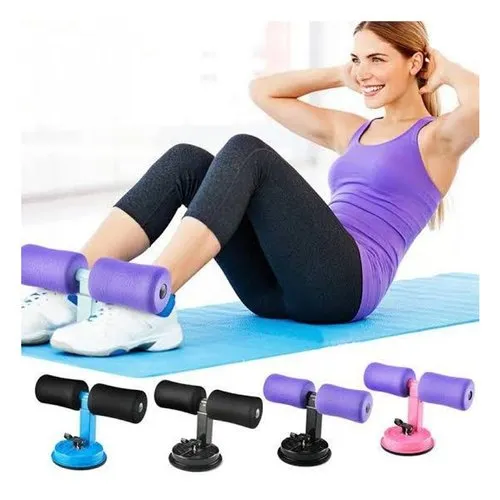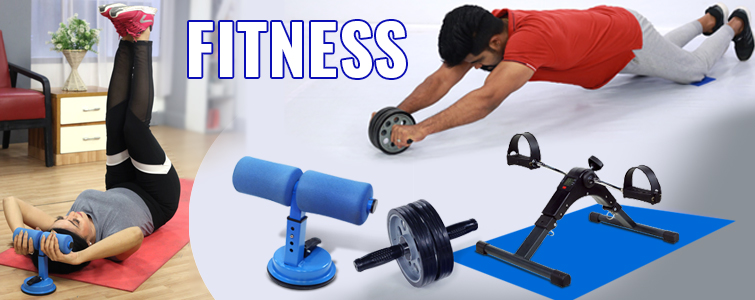Introduction
The fitness industry is experiencing a significant transformation due to the rise of e-commerce. From gym gear to supplements and digital workout programs, online platforms have become essential tools for fitness enthusiasts worldwide. The global nature of e-commerce means that consumers no longer have to rely on local stores for their fitness needs. Instead, they can access a vast range of products, services, and resources at the click of a button.
This blog delves into the trends and insights that are shaping the future of the global fitness market, focusing on how e-commerce is revolutionizing the way people buy fitness products and services.
1. The Shift to Online Shopping for Fitness Products
The convenience of shopping online has become one of the primary reasons why consumers are turning to e-commerce for fitness products. Online stores now offer a broader selection of gym equipment, workout apparel, supplements, and accessories than most physical stores could ever hope to provide.
- Wide Range of Products: Whether you’re looking for dumbbells, yoga mats, resistance bands, or protein powders, e-commerce platforms like Amazon, Walmart, and niche fitness stores such as Rogue Fitness offer a diverse range of options to meet the needs of all types of fitness enthusiasts.
- Convenience and Accessibility: Consumers appreciate the ability to shop for fitness products from anywhere, at any time. With global shipping options, people can purchase from brands in other countries, accessing products that may not be available locally.
- Price Comparison and Reviews: Online shoppers can easily compare prices across different e-commerce platforms and read reviews from fellow consumers. This helps make more informed purchasing decisions and ensures customers find the best value for their money.

2. Virtual Fitness Classes and Digital Integration
The integration of fitness and technology is one of the most significant shifts in the fitness market. Virtual fitness classes, digital training apps, and even AI-powered personal trainers are making fitness more accessible than ever. These digital tools are also driving significant changes in how fitness brands engage with consumers.
- On-Demand Workouts: Platforms like Peloton and Beachbody On Demand have revolutionized the way people experience fitness. Rather than attending physical gyms, consumers can now enjoy live and on-demand workout classes, such as cycling, yoga, HIIT, and strength training, all from the comfort of their homes.
- Fitness Apps and Wearables: Fitness apps such as Strava and MyFitnessPal allow users to track their workouts and monitor their progress. Wearable tech, like Fitbit and the Apple Watch, is helping people achieve their fitness goals by offering real-time data on activity levels, heart rate, and even sleep patterns. Many e-commerce platforms are now integrating with these devices to provide personalized shopping experiences based on fitness goals.

3. Subscription-Based Fitness Services and Products
Subscription services are becoming a dominant force in the fitness e-commerce landscape. From workout apps to monthly delivery boxes of supplements, these subscription models offer convenience, personalization, and often exclusive content for subscribers.
- Fitness Subscriptions: Digital fitness services are one of the fastest-growing segments of the fitness industry. Companies like Peloton offer subscription-based access to fitness content, while others like ClassPass allow users to book and attend a variety of fitness classes from different studios. These subscription services provide a flexible, cost-effective alternative to traditional gym memberships.
- Supplement Subscription Boxes: Services like Care/of and Ritual offer monthly subscriptions for personalized vitamins and supplements. Based on the results of a quiz or user input, these platforms curate a selection of products tailored to the customer’s specific needs, helping people maintain their fitness and health goals with ease.
- Athletic Apparel Subscriptions: Clothing brands like Fabletics and Rhone offer subscription models for workout apparel. Customers receive regular shipments of high-quality workout clothing, ensuring they always have fresh gear for their workouts.

4. Rise of Eco-Friendly Fitness Products
As sustainability becomes a key priority for many consumers, fitness e-commerce brands are responding by offering eco-friendly products. Whether it’s reducing plastic waste or creating sustainable workout gear, the demand for green fitness products is on the rise.
- Eco-Friendly Apparel: Fitness clothing companies are increasingly using recycled fabrics and sustainable production practices. Girlfriend Collective, for instance, offers leggings made from recycled water bottles and fabric waste. Patagonia is another leader in sustainable fitness apparel, offering eco-conscious workout wear made from organic cotton and recycled materials.
- Sustainable Gym Equipment: Companies are now producing gym gear with environmentally friendly materials. Liforme produces yoga mats that are made from biodegradable materials, reducing the environmental impact of fitness accessories.

5. Personalized Fitness Shopping Experiences
Personalization is at the heart of the evolving e-commerce fitness market. As brands gather data from customer interactions, they are able to create tailored shopping experiences that meet individual fitness goals, preferences, and needs.
- AI-Powered Recommendations: E-commerce platforms like Myprotein use artificial intelligence to recommend supplements, workout gear, and nutrition plans based on the customer’s fitness goals. If you’re looking to bulk up, you may receive suggestions for protein powders and resistance bands. If your goal is weight loss, the platform might recommend fat-burning supplements and cardio equipment.
- Customizable Gym Gear and Apparel: Many brands now offer the option to personalize fitness products. For example, Nike allows users to customize workout shoes with different colors and materials, while Sweaty Betty offers personalized workout apparel to match your style and performance needs.
- Tailored Nutrition Plans: Services like Trifecta and Snap Kitchen provide personalized meal plans and ready-to-eat meals that cater to specific fitness goals. These services take into account factors like dietary restrictions, fitness goals, and calorie needs.

6. Global Expansion of Fitness E-Commerce
E-commerce is helping fitness brands reach consumers around the world. While traditional brick-and-mortar stores are limited by geographic location, e-commerce platforms enable fitness brands to cater to a global audience, allowing people from different parts of the world to access the same products and services.
- Global Shipping: E-commerce platforms like Gymshark and Rogue Fitness ship products internationally, allowing fitness enthusiasts from various countries to buy equipment, apparel, and supplements. This global accessibility has expanded the reach of brands and opened up new markets.
- Localized Content: Many fitness brands are tailoring their content to specific regions. For instance, digital fitness platforms may offer localized workout programs and languages, ensuring their services are accessible to a wider audience.

7. The Future of E-Commerce in the Fitness Industry
The future of e-commerce in the fitness industry is bright, with innovation continuing to drive change. Some trends to look out for include:
- AI-Driven Fitness Coaching: As AI technology advances, personalized fitness coaching powered by AI could become more prevalent. Imagine a shopping experience where you not only buy fitness gear but also receive tailored workout plans based on your progress.
- More Interactive Shopping Experiences: As virtual reality (VR) and augmented reality (AR) technologies become more advanced, we may see e-commerce platforms offering virtual fitness classes, allowing consumers to test products like gym equipment in virtual environments before making a purchase.
- Increased Integration of Health Data: Fitness e-commerce platforms will likely continue integrating health data from wearables like fitness trackers and smartwatches. This data can help personalize product recommendations, workout routines, and meal plans.
Conclusion
E-commerce is reshaping the fitness industry in profound ways. From personalized shopping experiences to the rise of virtual fitness classes and eco-friendly products, the global fitness market is evolving rapidly. Whether you’re shopping for gym equipment, supplements, or workout clothes, the online shopping experience is becoming more accessible, convenient, and personalized.
As technology continues to advance, the future of fitness e-commerce will be driven by innovation, making it even easier for consumers to achieve their fitness goals. Stay tuned for more exciting developments in the world of fitness and e-commerce!